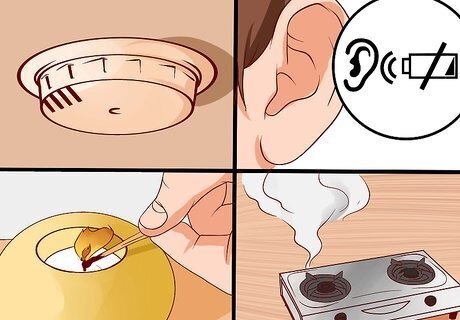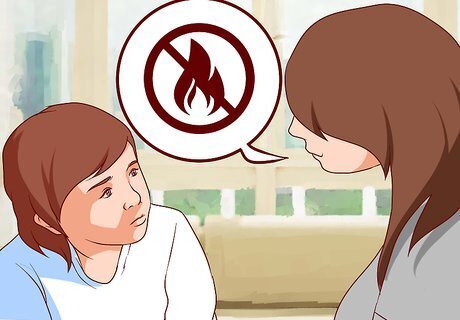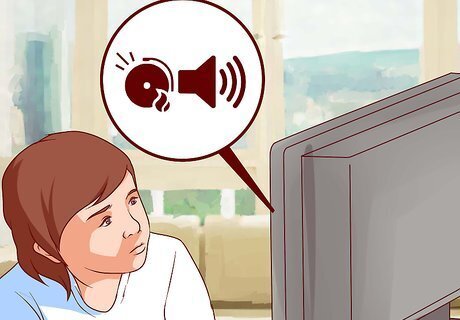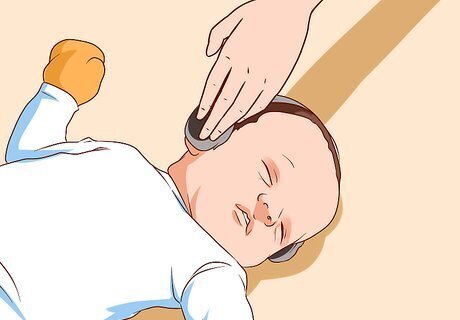
views
X
Research source
. Common treatments of “simple phobias” such as the fear of fire alarms can include a mix of cognitive behavioral therapy (CBT), acceptance and commitment therapy (ACT), and exposure therapy.
Using Therapy Strategies to Overcome Your Phobia

Determine the root of your fear. If you find yourself over-anxious or distressed over the possibility of a fire alarm, there could be any of several psychological or physiological causes. Not all symptoms share the same underlying issue. Consider talking to a licensed therapist or counselor to help determine the cause of your anxiety. For example, “ligyrophobia” is the fear of sudden and unexpected loud noises. Maybe your fear is more related to the sudden, unexpected nature of a fire alarm rather than the alarm itself. Phonophobia and ligyrophobia may be related to sensory processing disorder, or SPD. SPD occurs when the brain has trouble sending and receiving signals, and is sometimes linked to various other conditions, such as ADHD, autism, and genetic conditions. Although determining the origin of fears can be challenging at times, it can be helpful to perform a careful assessment that involves when the fear began, the context and variables involved in the development of the learned fear response.

Identify your negative and irrational thoughts. Cognitive behavioral therapy has shown great success in handling phobias and anxiety disorders. The first step in most treatment programs is to identify the false associations that your mind is making to the fire alarm. Ask yourself: “What is it that I fear exactly?” ”What am I ultimately afraid will happen?” ”Why do I think that this will happen?” ”When do these thoughts arise?”

Challenge your negative thoughts. Alone and with help from others, call yourself out when you make an irrational association. Each time the unwarranted fear strikes you, make it a point to pause and challenge the thought. Tell yourself, “This is not a rational fear.” Consider your fear a “false alarm” that your mind has created. Remind yourself, “I do not need to fear this sound. It is only a warning, an alert.” Enlist friends to call you out kindly when you make irrational associations.

Replace negative thoughts with realistic thoughts immediately. Just challenging your negative associations and thoughts is not enough. Each time the anxiety strikes you, challenge the thought and then offer a positive, rational replacement for it. Replace “what if” fears with “what else” options. For example, you might say, “I will not burst into flames as soon as I hear this sound. I will walk out of the house in an orderly manner.” Maybe you say to yourself, “This sound is not dangerous. In fact, it helps me survive and keeps me safe.”

Treat your fear as just another thought. Acceptance and commitment therapy focuses on working on accepting the discomfort of life without a judgment. Through ACT, you can build a commitment to behavioral change using mindfulness, or living in and accepting the present moment. If replacing negative thoughts with positive thoughts has limited success, try changing the way you relate to that negative thought in the first place. Tell yourself: "I know that his fear is uncomfortable for me right now, but it will pass, and it doesn't mean that I'm defective or broken - it just is." "This moment is uncomfortable, and that's part of life, just like good moments are. I can deal with both the bad and the good."

Practice relaxation and coping skills. Before you try exposure therapy, you will want to practice a set of relaxation skills or coping mechanisms to help you work through the anxiety caused by continued exposure to the fire alarm. You might try: Breathing or counting exercises. Yoga or meditation practices. A repeated phrase or mantra to refocus your mind. Movements or exercise to alleviate stress. Visualization exercises. Progressive muscle relaxation.

Confront your fear gradually. In exposure therapy, individuals attempt to desensitize themselves to the fear of fire alarms through incremental exposure. For example, you can confront the sound yourself for longer and longer periods of time, or you can ask a friend to test your home fire alarm at random times until the sound becomes familiar and normal to you. Do not attempt exposure until you have mastered relaxation techniques, so that you will be able to calm yourself if the exposure creates too much anxiety. Make a list of increasingly difficult situations and work through it slowly from least to most anxious. Try recording the sound of a fire alarm on your smartphone and listening to it at a higher and higher volume over time. Search for videos of fire alarms on the Internet and let them play while you are doing chores to desensitize yourself to the jarring sound. If you fear the actual fire more than the alarm, try lighting candles with every meal to familiarize yourself with safe, controlled flames. Engage the relaxation skills that you have learned earlier as you increase in anxiety. Never pull a public fire alarm when there is no fire or no drill, even if you are practicing exposure therapy. This may be a felony, and you could put other people's lives in danger.

Forge positive associations over time. As you become more familiar with the fire alarm and more relaxed around the sound, you will naturally build new associations for your body and mind. The more you tangibly prove to yourself that hearing a fire alarm will not harm you, the less frequently your anxiety will occur. Confront the alarm with friends or in otherwise pleasant conditions to associate new memories to that particular sound. New, positive memories act as living proof that the alarm cannot hurt you.
Helping Your Child Overcome a Fear of Fire Alarms

Acknowledge and talk about the fear. Giving voice to a child’s fear is a great way to begin the conversation. Have the child talk about what it is that they fear about the fire alarm, why they have those fears, and how the fire alarm makes them feel. For example, you might ask them: “What does the fire alarm make you think of?” "Are you afraid of the fire or the sound?” "Does the sound hurt your ears?” "What do you think a fire alarm means?”

Let the child know that it’s normal to have fears. Everyone (even adults) can have fears, and sometimes kids need to be reassured of that. Share some of your own fears with the child, and talk about other fears. Talk about the difference between bigger and smaller fears. How is the child’s fear of the fire alarm different from other, less debilitating fears? You do not need to call the fear “irrational” with the child. Talk about the value of overcoming fears in general. It is important to remember that alarms are often designed to be loud and uncomfortable so as to alert listeners and signal for them to take action, so a degree of anxiety is appropriate. Ask the school about what sound the fire alarm makes. Industrial fire alarms make different noises, there is the familiar buzzing noise. Some buildings use fire alarms with voice evacuation or chime. If they do use these types of alarms, you can reassure your kids that they don't have to be scared of fire drills. Have the child talk with friends and classmates as well. Peers can be a great source of strength for overcoming fears. Determine if the fear is severe enough to require the assistance of a mental health professional.

Recognize the “triggers” and specific anxieties related to the child’s fear. Some kids can become so sensitive to the fire alarm, they become anxious and hyper-vigilant whenever the stove is on or a candle is lit. Find out which events trigger anxiety in the child and talk about those events. Common triggers might be: Walking by the physical smoke detector in the home. Hearing the “beep” that signals a low battery in the smoke detector. Lighting a candle or a fireplace in the home. Smoke or steam coming from the stove during cooking.

Determine the root of the child’s fear. After taking note of the different triggers for your child’s anxiety, figure out what the origin of the phobia is. For example, is the child afraid of the sound of the alarm or the fire that the alarm represents? Talk to your child about the probability of an actual house fire and how owning a smoke detector does not mean that your family is expecting a fire someday. Make and practice a fire safety plan for your family. This can reassure and empower your child in the face of a real emergency.

Take a playful approach to overcoming the fear. Play is an important way children learn about their environments, and you can use playfulness and a sense of exploration to reduce anxiety surrounding the presence of a smoke detector in the home. Try any of the following: Make your family’s fire escape drill fun. Personify the fire alarm as a friend to your family. Encourage your child to talk to the smoke detector as they would a stuffed animal or toy. Write a little song or jingle to sing while testing the fire alarm each month. Show your child diagrams or videos about how smoke detectors are made. Be careful not to belittle the seriousness of the smoke detector too much. It is a life-saving device, and a fire alarm can save the life of your child.

Create positive or pleasant associations with the fire alarm. You can redirect the child’s automatic jump into negativity and anxiety by giving them something positive to associate with the jarring sound of the alarm instead of danger or fire. It’s a simple matter of tying better, positive experiences to the sudden noise. For example: Whenever you test the smoke alarm at home, have a small celebration or offer your child an ice cream treat. Connect home smoke detectors to more exciting elements of fire safety, such as fire engines, dalmatians, super tall ladders, or sliding down poles. Tie any individual triggers (such as candles or stoves) to positive experiences as well.

Gradually increase your child’s exposure to triggers over time. Kids can benefit from exposure therapy as well as adults. In fact, according to recent research, children can show improvement with exposure therapy in even less time than adults do. Start small and work up to the more stressful triggers. Accustom the child to the sound of a fire alarm by playing videos of fire drills online. Gradually increase the volume as the child becomes more comfortable to the sound. Consider letting children control the volume of the video themselves.

Celebrate small victories. Use positive reinforcement to encourage the child as they overcome their fear gradually through cognitive redirection and exposure. Acknowledging milestones on the road to recovery cuts the process into smaller pieces and helps give the child a sense of empowerment. For example: Make a list of all the triggers associated with the larger fear of fire alarms and check them off one at a time. Create a chart you can hang on your child’s wall and decorate with stickers after small victories. For example, when the child no longer fears a video of a fire alarm, congratulate them and mark the success on your chart.

Remind children of their past successes when facing new fears. The successes a child has dealing with the fear of fire alarms can be used as encouragement when new fears arise. Overcoming one irrational fear makes overcoming the next fear easier. Don’t let your child forget how far they have come!

Reassure infants during and after a sudden alarm to reduce the chance of trauma. While especially young children may not be able to verbally communicate their fears, fire alarms can be a source of anxiety and hearing damage to infants and toddlers. Cover your child’s ears while you remove them from the loud environment safely, but quickly. Comfort the baby or infant immediately to start attaching a positive association to the sound. Consider purchasing noise protection devices for your infant that can be readily available in case of a fire alarm. After the alarm, try a three-fold method of reassurance: explain, expose, and explore. Informed exposure therapy can work with young children in as little as three hours.
Managing a Child’s Fear of Fire Alarms at School

Request the school’s fire drill schedule ahead of time. It is not always possible for teachers to know the exact time of a fire drill ahead of time, but try working with school administrators to prepare yourself in advance as much as possible. If you know just when the alarm is going to sound, you can take steps to better prepare a student.

Communicate the rules and expectations that surround a school fire drill. Sometimes a fear of the unknown can amplify a student's fear of fire or the school's fire alarm. Children need to know what to expect during a fire drill, and teachers should be very clear about rules and procedures for drills. Anxiety can cause a child to lash out or misbehave in unexpected ways, which may require disciplinary action from the school. Help your students to understand the importance of following official procedure despite their fears. Why not take a moment to address a fear of fire alarms in front of the whole class? There may be several students who share the same anxiety.

Hold a pretend fire drill for the class. Seek permission from the administration to practice a fire drill for your class outside the regular drills scheduled by the school. Because there will be no sudden alarm sounding, the child can practice your school’s safety routine in a much less fearful situation. Try giving the child a positive responsibility during the drill, such as letting them lead the students from the front of the line or turn off the classroom lights from the back of the line. Separating the fire drill from the sound of the alarm can also help you determine just what triggers the student’s fear.

Consider letting the child leave the room or building before a scheduled fire drill. In some cases, the child may suffer enough anxiety to make participating in a school fire drill impossible right away. As in exposure therapy, gradually bring the child closer to the classroom or the school building as they become familiar with the drill routine and the sound of the alarm. Maybe a teachers’ aide can escort the student out of the room before the alarm sounds. Keep in mind, if the child avoids all the fire drills because of the alarm, they will not learn the important ways to act during a real fire emergency. Do not let fear get in the way of proper fire safety training.

Make the most of any therapeutic tools available. There are an increasing number of tools, media products, and safety technologies available to teachers for helping a student manage anxiety over fire alarms. For example, many children with an Autism Spectrum Disorder find relief from anxiety by wearing weighted vests. The physical pressure of the heavy vest comforts and relaxes the body. There are CDs available for sale online that contain common school sounds that can be helpful when practicing exposure therapy at home or in the classroom. Check with local fire safety programs or the local fire department for any tools they might be able to donate to your classroom or school.

















Comments
0 comment